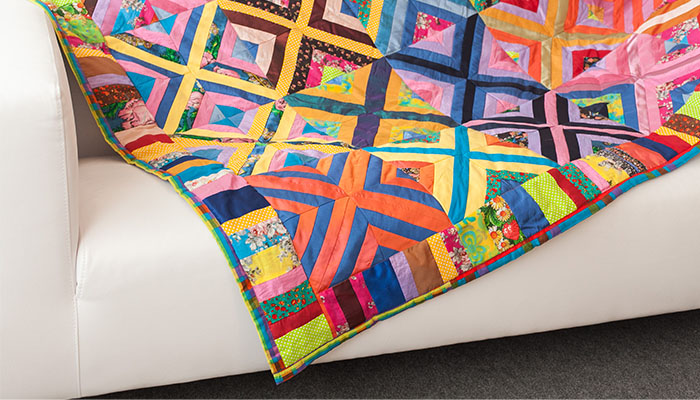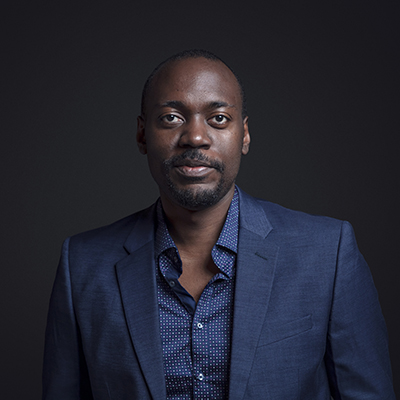When you talk to Associate Professor Loic Yengo for the first time, he might ask you how you met your partner.
It’s professional curiosity, but Dr Yengo isn’t a matchmaker. Rather, he is a geneticist whose interest lies in how your choice of mate influences the genomes of your children, and those of all your descendants through time.
It’s the “nature” side of the nature versus nurture debate, which explores whether we are shaped more by our genes or our environment.
And who better to answer this question than a geneticist who spends his time sifting through vast datasets of genetic information?
But it turns out we are asking the wrong question.
Nature and nurture: a continuum

“People tend to think of genes in a binary way,” Dr Yengo says. “If you have a certain gene, then you will have the effects of that gene, such as being susceptible to a certain disease. And if you don’t have that gene, then you won’t. But in fact, it’s more like a continuum.”
Dr Yengo is a statistical geneticist who investigates genetic variation between individuals and between populations to identify the genetic factors underlying diseases and other complex traits, such as height, educational attainment and body mass index.
To do this, he uses data from millions of people, each of whom has 3 billion pairs of information per genome – seriously big data. To make sense of this tsunami of information, Dr Yengo develops new methods of analysing this data, which is shared with other researchers around the world as they collectively uncover how our genetic material shapes us.
The balance can shift
“The question is not whether a trait is determined by our genes or our environment – nature versus nurture - but rather the balance between the two.
“For example, 80 per cent of height differences between people are determined by genetic factors. Environment still plays a role – a child’s growth can be stunted through poor nutrition, or certain diseases.
The balance between genes and the environment can shift.
The fall of communism in Estonia led to a higher influence of genetic factors on educational attainment – the level of qualification a person gains– because the post-Soviet environment has more equal educational opportunities, with free university tuition and entry not influenced by political or religious affiliation.
How our environment changes our genes
But the equation isn’t as simple as genes + environment = us.
Dr Yengo points out that our environment can lead to changes in our genes.
.
“If you live next to a nuclear reactor that suffers a meltdown, like Chernobyl, this would induce a lot of mutations in your genome, most of which will be bad for you.
“That’s an extreme example, but we do see people living in certain environments adapting to them, and that adaptation changes our genome over a timescale of thousands of years.
We are all patchwork quilts

It’s easy to think of ‘nature’ as your parents. But their genome – the sum of their genetic material – is made up of all the people who came before them.
“We are all mosaics of pieces of DNA coming from all of our ancestors – we’re patchwork quilts,” Dr Yengo says.
These patches are shaped by who we choose to procreate with – hence Dr Yengo’s interest in how people select a mate.
How we choose our partners
“One of the classical assumptions in genetic studies is that people look for partners randomly in the population, but this isn’t true, the data is shaped by human behaviour.
“I’m interested in these questions because our choice of mate shapes the next generation, including the likelihood of children having risk factors for disease.”
Dr Yengo’s research has confirmed that most people choose partners who are similar to themselves.
“We know that the height of spouses are correlated, though not extremely highly, where tall people tend to choose tall partners.
“And even if a couple may not look like each other, they often have other similarities that may not be immediately obvious.”
Does more choice change the results?

Is this a question of environment? Do we choose similar partners because those are the only ones we meet?
Interestingly, the answer is no.
A study in South Korea after the introduction of online dating found that the more choice people had, the more they chose partners who were similar to themselves.
The same holds true in studies conducted by Dr Yengo and his collaborators in European and Japanese people, though the characteristics that tend to be similar between partners differ between the various populations. (What about Europeans raised in Asia or vice versa? Dr Yengo doesn’t have the data but thinks it’s an interesting question to explore.)
The genes we don’t inherit still influence us
We share half of our genetic material with each of our two parents. You might assume that the half we don’t inherit plays no role in shaping our life.
But this isn’t necessarily true.
One of the most fascinating things Dr Yengo is exploring is the influence of the genes we don’t inherit – the missing patches in our quilt.
“There is also a component of nurture that can be genetic,” Dr Yengo says. “By looking at the genomes of two biological parents, and that of the child they produce, we can determine which genes the child didn’t inherit.
“Studies have found that for some traits, a third of the effect can be attributed to genes that are not actually transmitted to the child, but (because those genes are present in the parents) they still contribute to the environment in which the child is raised.
“For example, the environment in which adopted children develop may still be influenced by the genes of their adoptive parents. The question we try to answer is “how much?””

The more you learn about nature and nurture and the complex interplay between them, the more it becomes clear why this has been such a long-running debate.
But researchers like Dr Yengo are helping us learn more about how our genes and environment interact to shape us and generations to come.
